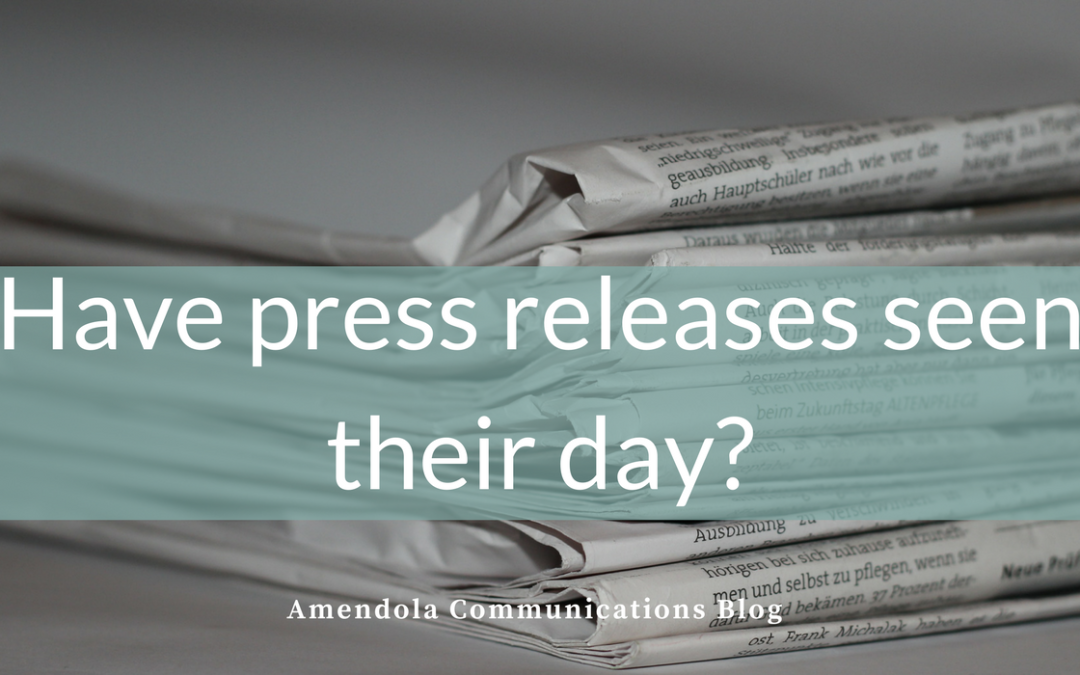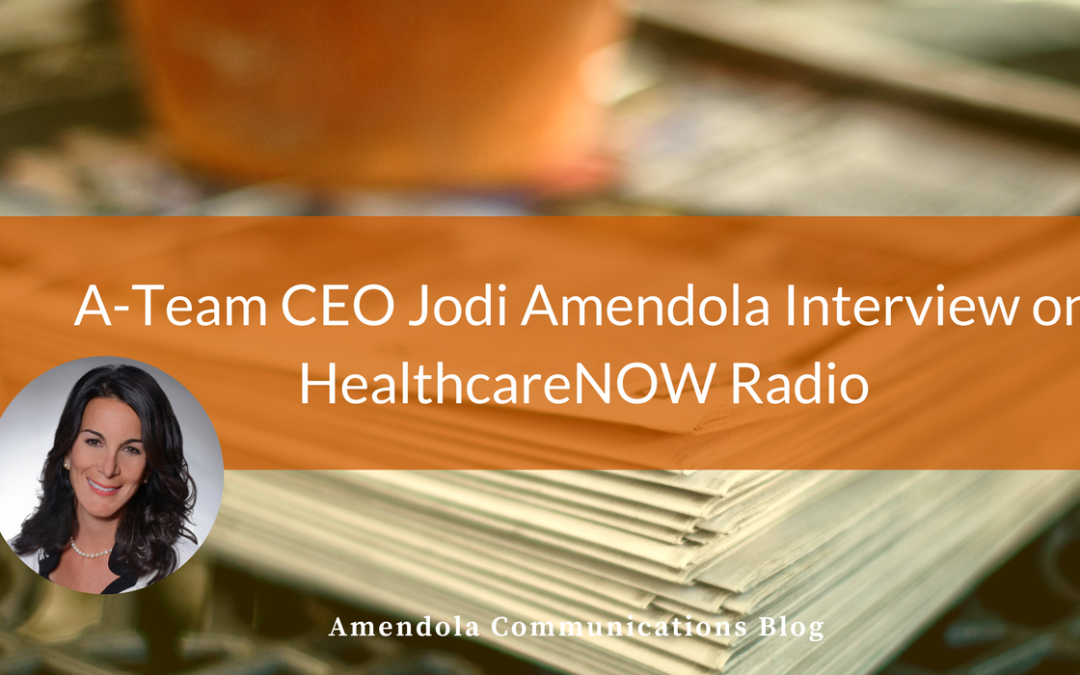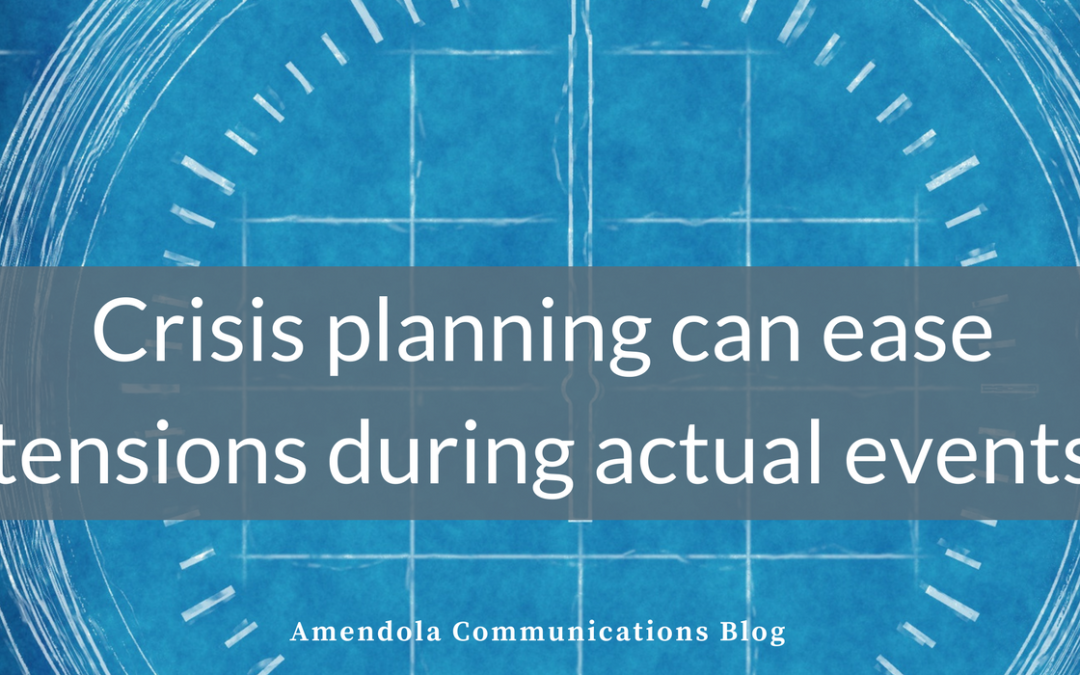
by Marcia Rhodes | Feb 7, 2018 | Blog
Entrepreneur recently ran a scathing article blasting press releases titled, Is Sending Out a Press Release Really Worth the Money? The article questions the value businesses receive from issuing press releases, calling releases “borderline useless,” serving mainly as a way for PR agencies to fleece clients.
I beg to differ.
As someone who has been in PR her entire life (we’re talking 3+ decades), I have seen numerous benefits from press releases when done right. I have even seen how they optimize SEO, as long as you follow a few best practices, which I’m happy to share in this blog.
Among the accounts I currently handle, one issues a single press release per year, while another issues one per month. Guess which one gets a lot more press coverage?
Perhaps I seem a bit defensive given I work for a PR agency. Fortunately, several of my colleagues are former reporters and editors themselves.
Here is how they view press releases:
Michelle Noteboom, senior account & content & director (former health IT blogger and columnist)
How else can you communicate to the industry what’s going on? For example, announcing new clients (so that prospects and competitors know you are growing), new product updates (especially if they are innovative) or new funding.
Press releases can also help attract traffic to your web site so you can communicate even more about your company and offerings.
However, if you have nothing but fluff to report, I agree that you should not do a press release!
Brandon Glenn, content & account director (former editor, Medical Economics)
As a former reporter, I can say with certainty that journalists still pay attention to press releases and find them a useful tool to stay informed about the companies and industries they cover. Press releases are by no means the be-all-and-end-all of PR tactics; they alone aren’t going to create record-breaking sales numbers. They’re merely one tool in the toolbox and a generally useful one as part of an overall strategy to generate awareness.
Ken Krause, senior account & content director (contributing editor for a sports magazine)
Well-written press releases are a great way to organize information. They help companies think through how to present their stories and messaging, and deliver them in a manner that’s easy for reporters, clients, and prospects to absorb. They provide more depth when pitching reporters the pitch can highlight what’s most newsworthy while the press release can deliver more details as to why it’s newsworthy. If you use a wire service, they also guarantee that the news will be out on the web so it can be discovered in a search.
There is one other value, and that is in placing it on your web site in the news section. Job candidates and sales prospects use web sites for company research, and a lack of news makes it look like not much is happening. Having a full and active newsroom creates a positive impression of your organization.
Chad Van Alstin, content & media relations manager (former editor of a health IT magazine and a sports publication)
To be frank, as an editor, I thought only a small percentage of press releases were worth immediately writing a story on.
But, that’s not their true value. Press releases are useful for the dissemination of information, and are a great way to keep journalists apprised of relevant news. More than that, they’re a good reminder for journalists that your company exists and its leaders are available for comment when the need arises. Lastly, press releases serve the function of boosting SEO through shared publication.
Not all of these benefits can be quantified and measured, and the benefits certainly aren’t true for every release I’ve seen some bad ones. But, in general, a press release is a great tool that is as valuable in the new media, Internet era as it was during the days of print.
Tips for writing SEO-powered press releases
In order to maximize the ROI from issuing a press release, be sure to do the following:
- Spend the time creating a powerful headline and subhead. Headlines should be under 100 characters to make it easily shareable on social media. Include the most important information in the first 50-65 characters, because that’s typically where Google cuts off the headline preview.
- Be sure to use keywords in the headline and lead paragraph. You never want to stuff keywords into a release (Google punishes that), but when you write naturally and have a good focus, keyword optimization will fall into place.
- Use variation in the text to break up blocks of text. One way to improve SEO is to make changes to the text that draws the user’s eye, and helps the information be absorbed more easily. Use bulleted or numbered lists, subheads, bolding and italics.
- Include no more than three links per release. It’s important not to have too many or Google starts suspecting your content of being link spam. Did you know that duplicate links can hurt your SEO? This is why it’s best not to link to the company name in the opening sentence; save it for the boilerplate.
- Consider multimedia news releases. Including any form of multimedia in a release boosts SEO (think about how much more likely you are to click on an article that has an image vs. text only). Click here to see a recent example.
If you read the Entrepreneur article and agree with it, it could be that you are issuing press releases on a wire and hoping something good will come of it. That’s actually why you need a PR agency, to make sure the release is SEO-optimized, to do the follow-up, to see to it that the news gets in front of the right journalists. With more and more companies fighting for the attention of fewer and fewer journalists, the value of the PR agency in this process increases considerably.

by admin | Feb 5, 2018 | Blog
We’re always excited when one of our own steps out from behind the scenes to grab the spotlight. In this episode of “What’s My Tagline?” from HealthcareNOW Radio, host Carol Flagg interviews Amendola Communications CEO (and self-described HIT Connector) Jodi Amendola. Jodi, of course, was recently named one of PR News’ Top Women in PR for 2017.
Over the course of the 27 minute discussion, Jodi shares her personal story on how she got started in healthcare IT, how Amendola Communications came to be one of the top healthcare IT PR firms in the country, and how the industry has changed from the early days of print, when it could take three months for a story to appear, to the 24 x 7 news cycle of today.
She then goes into detail on how to be successful exhibiting and speaking at HIMSS – including the planning that goes into it and the follow-up needed to maximize the benefits afterward. Jodi also shares some specific examples of how AC clients have been successful in reaching their target audiences, whether those are prospects, journalists, or analysts. The interview ends with Jodi sharing her look ahead to what 2018 will bring. Definitely worth a listen!

by Jenna Warner | Jan 31, 2018 | Blog
Just another article about how Millennials stink and how they are ruining everything. Right? *Insert eye roll* While I disagree with this outlook on Millennials, possibly from personal bias, no one can ignore the fact that this generation is edging their way into the decision maker’s seat as they are now the largest generation in the U.S. labor force. Their buying power is growing as both consumers and as professionals.
Working their way through markets like bulls in a china shop, Millennials have changed/killed/rebuilt industries like transportation, retail, healthcare and may be credited for creating the IoT (Internet of Things). B2B companies will soon have to face the music and adjust as Millennials will inevitably change their industry too, that is, if their world hasn’t already been flipped on its head.
Here are 4 trends healthcare will see as Millennials make their way through the industry, and how health IT companies and health systems can relieve the pain.
#1 – They take it personally
The problems Millennials have encountered in healthcare themselves are now fueling their drive to fix it. Growing up in a consumer’s economy where customer service and convenience is expected at every turn, it’s no secret healthcare has been behind the curve of this trend-turned-tradition.
One out of five people surveyed by PNC listed unexpected/surprise bills as the number one billing-related issue. With out-of-pocket costs on the rise, millennials are more inclined (41%) to request and receive estimates before undergoing treatment. Only 18% of seniors and 21% of boomers reported asking for or receiving information on costs upfront.
Health IT companies that can show the Millennial decision-maker how their product improves their bottom line and fixes a problem they know personally will be the winners. The patient experience plus revenue generator should be an attractive buy for this generation.
#2 – Delight Millennials or face their wrath
This is probably where we Millennials get a bad rap. Or a least one of the many ways where we have supposedly ruined everything. It’s not so much that we need to be delighted because we are spoiled brats; rather, we grew up in a time of customer service innovation. Combine that with the social boom where anyone and everyone could have their voice heard and it creates both opportunity and risk. If we enjoy something, or worse, if we hate something, we know exactly how to get the message out to the masses.
Millennials opinions as customers are no longer limited to their personal social circles. The real danger or potential danger is that they think to tell the masses first. Their parents generation might go on Facebook after a few days and leave a review but, Millennials have already Snapchatted the problem to their peers, tweeted at you and your competitor, complained on Reddit, dropped a one star on Yelp, Facebook and Google, and started following your competition on Instagram.
This generation (and those that come after) take online reviews very seriously. Keeping a positive brand sentiment and the ability to track or improve it will be key for health systems and healthcare IT companies.
#3 – They won’t conform to traditional healthcare
While having a regular physician may be the best for care, it’s not the best for convenience. Millenials expect doctors to be able to see all of their medical history at a moment’s notice and pick up wherever the last physician(s) left off. Their abandoned shopping cart follows them around for their entire life. Why can’t their health records? While it may be just a pipe dream to those who actually interact with EHRs, the complicated problems with interoperability are not well known to the public.
With little to no understanding of interoperability issues, staying loyal is more of a cost than a benefit. Options in telemedicine and doctor finding tools make it more convenient and cost-effective for Millennials to stray from their primary care physician. They can go anywhere that their insurance will cover, so why only go to their PCP during work hours?
Millennials are 31% more likely than their colleagues ages 35 and up to feel uncomfortable leaving work for preventive care appointments. Health IT companies navigating this process are attractive to Millennials and health systems looking to retain the healthy young clientele.
#4 – STOP and think before jumping on a trend
Facebook live streams, podcasts, Instagram accounts and the expensive mobile app are just a few examples of trends that need to be understood before they are implemented. Forcing apps when most Millennials have limited mobile space and few health needs is a cringe-worthy problem I have seen too many times. Baby boomers and Gen Xers certainly see these apps differently and could be a better market to target.
Do your research. Ask your target market if there is already a solution that solves the problem. Figure out how to make it better. Don’t just think outside the box, erase the box and start thinking. Uber didn’t help the taxi industry find customers easier. They changed the resource, workforce and access to transportation.
As this generation makes its way through healthcare, I expect to see many changes that could be painful. Health systems and health IT companies will have adjust to the needs of the new decision makers, and disruption as we know it will be disrupted.
by admin | Jan 22, 2018 | Blog
http://usaweekly.com/2018/01/interview-with-jodi-amendola-ceo-at-amendola-communications/

by Philip Anast | Jan 17, 2018 | Blog
A week doesn’t go by without news of a hospital or health system affected by a cyberattack or some other crisis. Coupled with an always-on news cycle and social media ecosystem, a crisis can destroy reputations. While the incidents themselves aren’t always preventable, organizations that thoughtfully do some advance crisis planning can emerge with their brands intact.
The ability to respond promptly to disasters or damaging reports can build confidence in constituents that the organization is on top of the crisis and a leader in its sector.
One thing to consider is that crisis plans should make very clear who is responsible for what. Here are several recommendations for consideration to help your organization keep pace:
- Prepare in advance with inputs from the organization’s functional areas. The time to plan for a crisis is long before it hits. A well thought-out crisis plan is designed to help an organization communicate internally and externally with clear, succinct and timely direction. The goal is to minimize confusion and maintain confidence whatever crisis may occur.
- Identify stakeholders. Designing an effective crisis management plan also requires an understanding of stakeholders and their roles. Stakeholders are all those who have an interest in the outcome. For a health system, the list is generally long and can include patients, governments, administrators, board members, clinicians. Each might need slightly different things during a crisis, and they should all be considered as separate audiences.
- Identify a communications chain of command. Crisis plans should in advance identify all of those who will be involved with managing a crisis, what areas they are responsible for and who is ultimately responsible for making decisions. Then, all of those involved should receive the training they need to be effective in their roles. For example, specialists from all functional areas of the organization should be available to lend their expertise should the need arise, and executive spokespeople should receive media training.
- Create real-world tools that can be modified later. One of the most valuable things to have in a crisis is a head start. Messaging, scripts and spokespeople should be prepared in advance. The communications team can later assist in adapting standard scripts to specific situations the organization encounters.
- Ensure that crisis management messaging addresses various aspects of the crisis. When communicating bad news or another type of crisis, it is imperative that the organization’s spokespersons do the following:
-
- Elaborate with the “what” explain what happened with concise language, together with the organization’s position on the issue
- Educate with the “how” explain how audiences should respond to the situation and how the organization is responding
- Engage with the “why” explain the impact the situation has on operations so that impacts are not blown out of proportion
By giving thoughtful consideration to the development of a crisis management plan, organizations are more likely to be able to recover from bad news. In some cases, they might even exit the crisis with stronger brand relationships.

by Ken Krause | Jan 10, 2018 | Blog
One of the core tenets of journalism (and public relations, which at most colleges is part of the School of Journalism) is the use of AP style when writing. AP, of course, stands for the Associated Press, whose manual and rules are drilled into journalism students from the day they begin writing for their school newspaper (or whatever aspiring writers write for in school these days).
For a PR professional, use of AP style demonstrates that you are a journalism insider. That’s very important when you’re pitching a byline article, or a press release, or some other piece of content that needs to be reviewed and approved by an editor. It gives you a certain level of credibility, or at least signals to an editor that he or she won’t have to spend untold hours bringing your writing up to par.
Failure to use it, on the other hand, is generally seen as an admission that you are an ignorant hack whose writing skills would be best applied to warning labels on pet supplies. No one wants that.
This, of course, is the reason Amendola Communications is very careful about conforming to AP style. It benefits not only our agency but our clients.
Still, for those who aren’t familiar with AP style, some of its peccadillos can be a bit off-putting. They’re not used to seeing things written that way, and their preference for the approach they’re used to can become a bone of contention that slows down the writing and approval process.
Here’s the reality of the situation. When you are writing for your own blog, or marketing materials, or internal memos, etc. go ahead and let your preferences dictate the style. But when you’re writing something you’d like to have published by an independent media outlet, it’s important to follow AP style.
So what does that mean from a practical standpoint? Glad you asked! Here are five examples of the differences between regular people style and AP style. Those of you who are familiar with it please feel free to add additional common uses in the comments section.
Capitalizing corporate titles or not
This is the one that probably causes more consternation between Amendola Communications account managers and clients, so let’s start there.
Most people are taught in business writing courses to capitalize someone’s title, such as President, or Chief Medical Officer, or Vice President of Some Made Up Area that Sounds Good on LinkedIn. It’s viewed as disrespectful not to capitalize the title.
That is not the case in AP style. Titles are never capitalized, unless they are used as part of the person’s identity. Which means you can refer to President Trump with capital letters, but you would write Donald J. Trump is president of the United States.
This, by the way, is one of the easiest tests for editors and journalists to see who knows what they’re doing. Get it right in your press release and you’ve removed a barrier to publishing.
Spelling out acronyms
While the healthcare industry loves it some acronyms, AP style is not as much of a fan. So while you may believe everyone you’re communicating with knows EHR stands for electronic health record, AP style still demands that you spell it out anyway.
Usually, you will spell it out first, then put the acronym in parenthesis afterward, i.e., electronic health record (EHR). The exception is in quotes, which means if you’re going to use an acronym in a quote try to spell it out ahead of time, just to be safe. Of course, some acronyms that are widely known, such as FBI or CIA, do not need to be spelled out. But if you’re writing about them and you work in health IT, you probably have bigger issues than AP style facing you.
Bonus fun fact #1: According to the AP Style guide, using the initialism CEO by itself is acceptable, although they still recommend spelling it out somewhere else. Other titles, such as CFO or CMO, must always be spelled out because they are less universal.
Writing out numbers
This is another of those interesting AP style oddities. When writing out single numbers from 0-9, AP style dictates you spell out the number rather than use the numeral. So zero for 0, one for 1, all the way up to nine (9). Once you’re in double digits, you use the numerals, so 10, 11, and so forth.
That also applies to numbers used in combination, which can get very awkward. You would write “there are 10 three-bedroom homes on this block” or “Put the three of us down for 12 medical devices each.”
State abbreviations
The AP has its own set of state abbreviations that are preferred, especially for use in a dateline. They are different (and longer) in most cases from the more-familiar postal codes, so it’s worth looking up. Or, you can just follow this link, although they’re not laid out quite as nicely as you might like.
Here are a couple of examples. The postal code for California is CA, but the AP style abbreviation is Calif. The postal code for Arizona, where Amendola Communications is headquartered, is AZ whereas the AP style abbreviation is Ariz.
Two-word states tend to get different treatment. While New Hampshire uses an N and an H for both, the postal code is NH while the AP style abbreviation is N.H. The extra periods make a difference.
Bonus fun fact #2: When you’re in the body of a press release, AP style stresses spelling out the name of the state rather than using abbreviations of any kind.
Bonus fun fact #3: Certain large cities, such as Chicago, Los Angeles, Phoenix, and New York, don’t require a state at all in the dateline. In fact, including a state again makes you look like you don’t know what you’re doing.
Other types of abbreviations
For pretty much any other type of abbreviation, you’re always going to use periods after each letter. That includes professional credentials (M.D. instead of MD, Ph.D. instead of PhD) and time designations (p.m. instead of pm, E.S.T. instead of Eastern Standard Time).
Yes, it can be very odd-looking, especially when you say an event will begin at 1:00 p.m. E.S.T., and yes, all those periods kind of get in the way. But that’s the way, uh-huh uh-huh, they like it. (Sorry, channeling my inner Kate Donlon there.)
So many rules
This is just a small sampling of some of the most common issues that seem to crop up from time to time. There are many more. In fact, the AP puts out an entire manual with everything you could possibly wonder about, which they will be more than happy to sell you if you’re interested. It’s available in both paper and electronic form.
Or, you can just count on your friendly neighborhood PR pros to get it right for you. It’s all part of the service.




